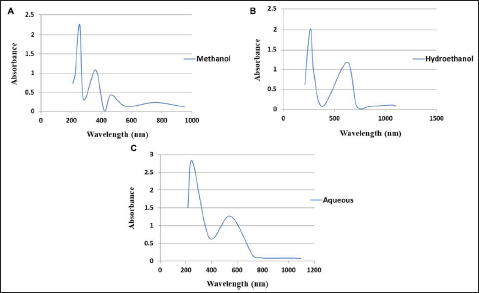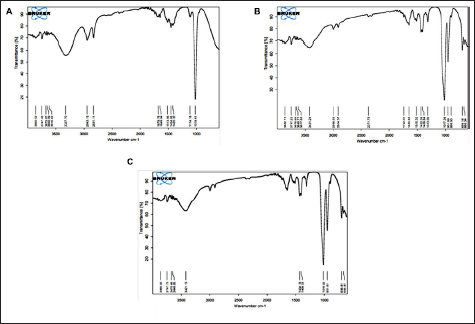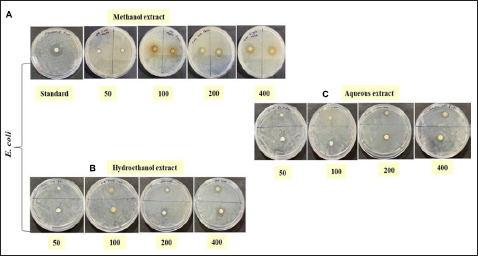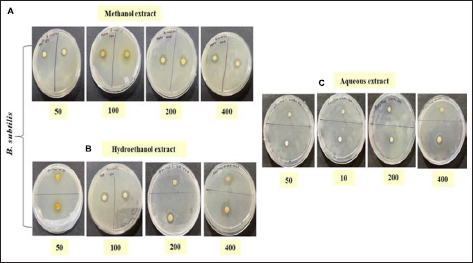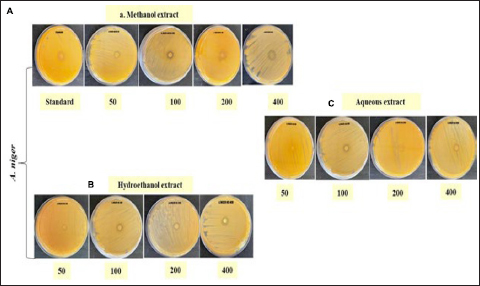1. INTRODUCTION
Rheumatoid arthritis (RA) is an inflammatory condition that mostly affects the joints. It causes mild swelling, and excessive and atypical synovial development, which finally alters the shape of the joint [1]. RA affects women more frequently than men, and although it can strike at any age, it usually appears between the ages of 50 and 60. Traditional remedies have been used as a form of healthcare since the prehistoric era and are frequently used to treat a wide range of disorders. Traditional remedies are safe for use at any age and have few negative effects [2]. To lead a healthy lifestyle, Ayurveda is extremely important. Animals, plants, and microorganisms all contribute to the synthesis of physiologically active phytochemical substances that are used in the creation of pharmaceuticals. These are classified as primary and secondary constituents depending on their role in plant metabolism. Many sophisticated techniques can be used to validate the presence of phytoconstituents in medicinal plants. Ultraviolet-Visible (UV-Vis) spectrometry and Fourier transform infrared spectroscopy (FTIR) are two effective techniques for identifying and determining the structure of phytochemicals [3].
Biologic agents, disease-modifying anti-rheumatic medicines (DMARDs), and non-steroidal anti-inflammatory drugs (NSAIDs) are commonly used to reduce inflammation and regulate symptoms [4], although they have been reported to have some side effects. According to estimates made by Arya et al. [5], about 43% of arthritis patients in India use herbal remedies to manage their condition. Chloris virgata Sw. of the Poaceae family is one of the weeds of warm weather in the eastern part of Australia, and its occurrence can be easily seen throughout the mainland of Australia. Resistance or tolerance to glyphosate, dispersal through flood and wind, and greater production of seeds are some factors that resulted in the prevalence of C. virgata Sw. in both non-cropping and cropping seasons [6,7]. Different transcriptomic analyses were done on C. virgata Sw. which reported the major genes responsible for their fastest growth and germination, especially in the major grasslands of Mongolia [8].
An intradermal or subdermal injection of Freund’s complete adjuvant (FCA) has been broadly used for the induction of arthritis in rats. However, its application to direct arthritis in mice has been reported occasionally, with less success [9]. Adjuvant directed arthritis has several limitations for an animal model; especially the disorder that resulted after the injection due to the resulting stress and severe discomfort. The polyarthritis caused by FCA is an attempt to result in less drastic arthritis by eliminating some of the complicating factors of this model. Major modifications include its injection locally, either around or into the tibiotarsal joint. These modifications allow the occurrence of localized arthritis without targeting the mobility of poor animals [10]. Panda et al. [11] reported that the decoction forms of C. virgata Sw. are employed by tribal people in Odisha, India, to treat a variety of rheumatic conditions. In rural Tamil Nadu, India, residents reportedly utilize C. virgata Sw. to treat rheumatism, inflammation, discomfort, and stomach aches. According to numerous studies, protein denaturation is a crucial factor in the development of rheumatoid arthritis. Therefore, the purpose of this study was to investigate all possible ideas and methods for future sources of herbal medicines to treat arthritis, as well as to characterize the bioactive components in C. virgata Sw. plant extracts using UV and FTIR.
REFERENCES
1. Wang Q, Kuang H, Su Y, Sun Y, Feng J, Guo R, Chan K. Naturally derived anti-inflammatory compounds from Chinese medicinal plants. J Ethnopharmacol. 2013;146(1):9-39. [CrossRef]
2. Shinwari ZK. Medicinal plants research in Pakistan. J Med Plant Res. 2010;4(3):161-76.
3. Altemimi A, Lakhssassi N, Baharlouei A, Watson DG, Lightfoot DA. Pytochemicals: extraction, isolation, and identification of bioactive compounds from plant extracts. Plants. 2017;6(4):42. [CrossRef]
4. Rajendran R, Krishnakumar E. Anti-arthritic activity of Premna serratifolia (Linn.), wood against adjuvant induced arthritis. Avicenna J Med Biotechnol. 2010;2(2):101-6.
5. Arya V, Gupta VK, Kaur R. A review on plants having antiarthritis potential. Int J Pharm Sci Rev Res. 2011;7(2):131-6.
6. Mahajan G, Chauhan BS. Evaluation of preemergent herbicides for Chloris virgata control in Mungbean. Plants. 2021;10(8):1632. [CrossRef]
7. Rojas-Sandoval J. Chloris virgata (feather finger grass). CABI Compendium. 2022. [CrossRef].
8. Bolortuya B, Kawabata S, Yamagami A, Davaapurev B-O, Takahashi F, Inoue K, et al. Transcriptome analysis of Chloris virgata, which shows the fastest germination and growth in the major Mongolian grassland plant. Front Plant Sci. 2021;12:684987. [CrossRef].
9. Liu C, Li Y, Wen C, Olatunji OJ, Yin Z. Dehydrozingerone alleviates hyperalgesia, oxidative stress and inflammatory factors in complete Freund’s adjuvant-induced arthritic rats. Drug Design Develop Therapy. 2022;16:3015-22. [CrossRef]
10. Naz R, Ahmed Z, Shahzad M, Shabbir A, Kamal F. Amelioration of rheumatoid arthritis by anacardium occidentale via inhibition of collagenase and lysosomal enzymes. Evid Based Complementary Altern Med. 2020;2020:8869484. [CrossRef]
11. Panda SS, Sahu SC, Dhal N K. Documentation of tribal claims for rheumatism in Odisha, India. Int J Pharm Sci. 2015;7:379-84.
12. Hossen SM, Hossain MS, Yusuf ATM, Chaudhary P, Emon NU, Janmeda P. Profiling of phytochemical and antioxidant activity of wild mushrooms: evidence from the in vitro study and phytoconstituent’s binding affinity to the human erythrocyte catalase and human glutathione reductase. Food Sci Nutr. 2022;10(1):88-102. [CrossRef].
13. Karpagasundari C, Kulothungan S. Analysis of bioactive compounds in Physalis minima leaves using GC MS, HPLC, UV-VIS and FTIR techniques. J Pharmacogn Phytochem. 2014;3(4):196-201.
14. Subashini MS, Rajendran P, Ashok G, Kanthesh BM. TLC, FTIR and GCMS analysis of leaves of Gymnema sylvestre R. Br from Kolli Hills, Tamil Nadu, India. Int J Curr Microbiol App Sci. 2015;4(7):757-64.
15. Chew AL, Jessica JJA, Sasidharan S. Antioxidant and antibacterial activity of different parts of Leucas aspera. Asian Pac J Trop Biomed. 2012;2(3):176-80. [CrossRef]
16. Djuichou Nguemnang SF, Tsafack EG, Mbiantcha M, Gilbert A, Atsamo AD, Yousseu Nana W, et al. In vitro anti-inflammatory and in vivo antiarthritic activities of aqueous and ethanolic extracts of Dissotis thollonii Cogn. (Melastomataceae) in rats. Evid Based Complementary Altern Med. 2019;3612481. [CrossRef]
17. Sarkar AK, Rai AP. Phytochemical investigation and anti-arthritic activity of hydroalcoholic extracts of Trichosanthes dioica. MAP. 2020;9(5):356. [CrossRef]
18. Petchi RR, Vijaya C, Parasuraman S. Anti-arthritic activity of ethanolic extract of Tridax procumbens (Linn.) in Sprague Dawley Rats. Pharmacogn Res. 2013;5(2):113-7. [CrossRef]
19. Rawat B, Garg AP. Characterization of phytochemicals isolated from Cucurbita pepo seeds using UV–Vis and FTIR spectroscopy. Plant Arch. 2021;21(1):892-9. [CrossRef]
20. Yadav P, Chaudhary P, Kumari D, Janmeda P. Assessment of phytochemical screening and antioxidant potential of Heteropogon contortus (L.) whole plant. T Appl Biol Chem. 2023;3(3):62-70. [CrossRef]
21. Abbasi BA, Iqbal J, Khan Z, Ahmad R, Uddin S, Shahbaz A, et al. Phytofabrication of cobalt oxide nanoparticles from Rhamnus virgata leaves extract and investigation of different bioactivities. Microscop Res Tech. 2020;84(2):192-201. [CrossRef]
22. Uddin S, Safdar LB, Iqbal J, Yaseen T, Laila S, Anwar S, et al. Green synthesis of nickel oxide nanoparticles using leaf extract of Berberis balochistanica: Characterization, and diverse biological applications. Microscop Res Tech. 2021;84(9):2004-16. [CrossRef]
23. Pharmawati M, Wrasiati LP. Phytochemical screening and FTIR spectroscopy on crude extract from Enhalus acoroides leaves. Malaysian J Anal Sci. 2020;24(1):70-7.
24. Bhattacharjee I, Chatterjee SK, Chatterjee S, Chandra G. Antibacterial potentiality of Argemone mexicana solvent extracts against some pathogenic bacteria. Mem Inst Oswaldo Cruz. 2006;101:645-8.
25. Quradha MM, Duru ME, Kucukaydin S, Tamfu AN, Lqbal M, Bibi H, et al. Comparative assessment of phenolic composition profile and biological activities of green extract and conventional extracts of Salvia sclarea. Sci Rep. 2024;14:1885. [CrossRef]
26. Farjana A, Zerin N, Kabir MS. Antimicrobial activity of medicinal plant leaf extracts against pathogenic bacteria. Asian Pac J Trop Dis. 2014;4: S920-3. [CrossRef]
27. Okla MK, Alatar AA, Al-amri SS, Soufan WH, Ahmad A, Abdel-Maksoud MA. Antibacterial and antifungal activity of the extracts of different parts of Avicennia marina (Forssk.) Vierh Plants. 2021;10(2):252. [CrossRef]
28. Khandelwal KR. Practical pharmacognosy. Technique and experiments. 9th ed. Pune, India: Nirali Publications; 2000.
29. Dharmadeva S, Galgamuwa LS, Prasadinie C, Kumarasinghe N. In vitro anti-inflammatory activity of Ficus racemosa L. bark using albumin denaturation method. Ayu. 2018;39(4):239-42. [CrossRef]
30. Nasuti C, Fedeli D, Bordoni L, Piangerelli M, Servili M, Selvaggini R, Gabbianelli R. Anti-inflammatory, anti-arthritic and anti-nociceptive activities of nigella sativa oil in a rat model of arthritis. Antioxidants (Basel). 2019;8(9):342. [CrossRef]
31. Yadav P, Chaudhary P, Singh D, Chaudhary S, Prakash A, Janmeda P. Pharmacognostic, antimicrobial and antiarthritic properties of heteropogon contortus (L.). Biochem. Cell. Arch. 2023;23(1):651-61. [CrossRef]
32. Singh VS, Dhawale SC, Shakeel F, Faiyazuddin M, Alshehri S. Antiarthritic potential of Calotropis procera leaf fractions in FCA-induced arthritic rats: involvement of cellular inflammatory mediators and other biomarkers. Agriculture. 2021;11(1):68. [CrossRef]
33. Hu F, Hepburn HR, Li Y, Chen M, Radloff SE, Daya S. Effect of ethanol and water extracts of Propolis (bee glue) on acute inflammatory animal models. J. Ethnopharmacol. 2005;100(3):276-83. [CrossRef]
34. Rahman H, Eswaraiah MC, Dutta AM. Anti-arthritic activity of leaves and oil of Aquilaria agallocha. Saudi J Life Sci. 2016;1(1):34-43.
35. Li Y, Kakkar R, Wang J. In vivo and in vitro approach to anti-arthritic and anti-inflammatory effect of crocetin by alteration of nuclear factor-e2-related factor 2/hem oxygenase (HO)-1 and NF-κB expression. Front Pharmacol. 2018;9:1341. [CrossRef]
36. Kamal RM, Sabry MM, Aly ZY, Hifnawy MS. Phytochemical and in- vivo anti-arthritic significance of Aloe thraskii baker in combined therapy with methotrexate in adjuvant-induced arthritis in rats. Molecules. 2021;26(12):3660. [CrossRef]
37. Khawaja G, El-Orfali Y. Silibinin’s effects against methotrexate-induced hepatotoxicity in adjuvant-induced arthritis rat model. Pharmaceuticals. 2024;17(4):431. [CrossRef]
38. Sharma A, Goel A, Lin Z. Analysis of anti-rheumatic activity of Nyctanthes arbor-tristis via in vivo and pharmacovigilance approaches. Front Pharmacol. 2023;14:1307799. [CrossRef]
